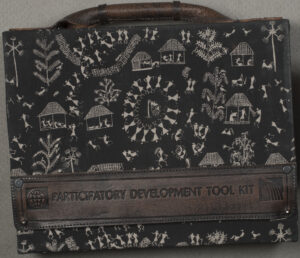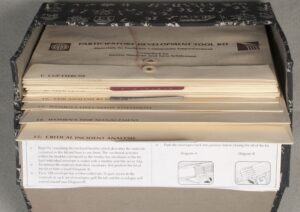 Published: Washington, D.C., 1994
Published: Washington, D.C., 1994
Since its inception in 1944, the World Bank has been providing financial support to reduce poverty in developing countries throughout the world.
The concept of “participatory development” dates to the 1970s and arose from research largely funded by the World Bank. As this kit’s foreword explains, the idea is founded upon the basic premise that “the effectiveness of efforts to alleviate poverty will be significantly enhanced by the active engagement of the people and communities affected at all stages in the process.”
To that end, this tool kit contains twenty-five activities designed to engage local communities in their own development. One activity, for example, is designed “to help community members learn a new way to assess and analyze their situation with regard to water supply and sanitation services.” Another helps the community understand how disease can spread as a result of improper water use and sanitation. 
While the authors admit that they developed these activities with water and sanitation needs in mind, they do note that they could be applied to any number of community development aspects. Whether it’s sanitation, farming, or healthcare, the creators’ premise remains the same: actual engagement with the local community works better than simply dropping off a truckload of supplies.
The kit itself is as novel and functional as the idea of participatory development. The activity materials, which include a variety of photographs, drawings, and charts, are stored in folders conveniently labeled according to their corresponding activities. To prevent the loss of materials, the folders themselves are attached to the base of a folding suitcase covered with decorated cloth.
